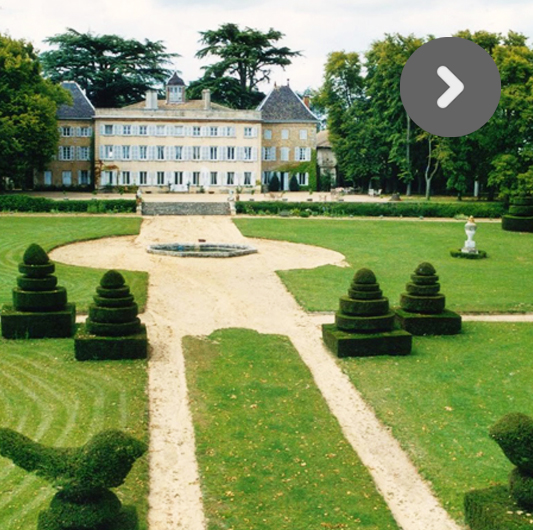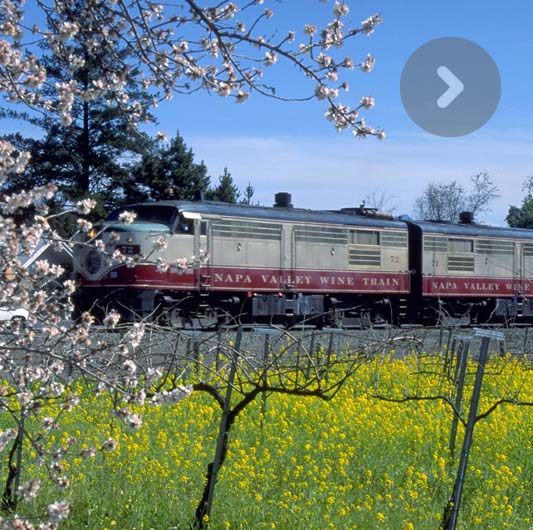





LAND AND HISTORY
Five centuries BC, the Greeks had already planted vines in the south of Gaul. The Rhodanian corridor, sole transit route between Southern and Northern Europe, was witnessing high levels of commercial activity. The vineyards were developed under the Roman occupation. The Roman legionaries and noblemen received land and cultivated the vines, creating wine estates.
In the Ist century of our era, the vines planted in terraces around Vienne are an early sign of the renowned Côte-Rôtie. In the region of Tricastin, where the Grignan les Adhémar appellation is produced today, a large production of amphoras was updated, a sign of the region’s wine growing vocation. The so-called “wine of Vienne” was renowned and the wine of choice in Roman banquets.
In the XIIth century, the powerful Commandery of Templars cultivated vines in Roaix. The Counts of Toulouse gave momentum to the vineyards of Sablet and Calranne. The Cornas, a powerful and coarse red wine, was much appreciated by the Emperor Charlemagne, kings Louise XI, Charles-Quint, Louis XV and Richelieu. The Saint-Joseph, harmonious and elegant, also took pride of place on the tables of the kings of France. The vineyard of Saint Peray that produces an effervescent white wine was a source of inspiration for the composer Richard Wagner.
« Sangui Christi »
In the XIVth century, the papacy settled in Avignon. From Clement V to Benedict XIII, the seven popes and the two dissident popes, succeed one another with differences, but cultivate their vines with consistency. The vines flourish on their land, at the foot on mont Ventoux, in Malaucène, Visan, Tournon and Avignon. It is pope John XXII who in 1317 had the good fortune to have a vineyard planted at Châteauneuf-Du-Pape. The pope’s grapes, wine of mass, become the wine blessed by the Gods!
The so-called « vins de Vienne »
Known under the generic term “wines of Vienne”, the mention “Côte du Rhône” in the singular appears in the XVII century to designate the constituency of Uzès. It is only in the XIXth century that the appellation regroups the wines produced on the left bank and takes the plural form of Côtes du Rhônes.
In the XXth century, the vineyard decimated by phylloxera is reconnected with nobility and youth under the stewardship of baron Pierre Le Roy de Boiseaumarié. Through his marriage to Edmée Bernard le Saint, heiress to the Château Fortia estate at Châteauneuf du Pape, the baron marries into the vineyard. In 1924, he created the syndicate of Châteuneuf du Pape wines and in 1929, the syndicate of Côtes du Rhône. The baron also achieved its AOC classification in 1937, nowadays AOP. In 1966 follows the classification of the Côtes du Rhône Villages with 17 villages. Villages that are able to add their names behind the appellation, such as Cairnes or Ségur..
The Rhodanian corridor : generosity and conviviality
From the Vaucluse to the Isère, notwithstanding the Drôme, the Ardèche and the Loire with for only connection the Rhône River, one travels from Avignon to Vienne skipping from one bank to the other. The vineyards are lined up on a soil of alluvial pebbles like Châteauneuf du Pape, alternating with fields of lavender, arranged along narrow stretches of land on terraces on either side of the River for the Côte-Rôtie, climbing on the hillsides and run away on the hilltops at Tain l’Hermitage.
The itinerary of the wines of the Rhone Valley cross no less than five departments, with as many landscapes, cultures to discover around the cultivation of the vine. Soils, climates, grape varieties.. The Côtes du Rhône are described as generous wines. The Côtes du Rhône Village are convivial wines and the 15 Côtes du Rhônes vintages are reserved for days of celebration.
In the 12 authorised grape varieties, we find the reds and rosés, the Grenache, the syrah, the mourvèdre, for the whites, the white clairette, the white Grenache and the muscat.
The palette and colours of the wines of the Rhone Valley is endless. The vintages are spread over the north and south depending on the appellation areas. The Hermitage offers a powerful noble red and ample, fat whites, its neighbour the Crozes-Hermitage, fruity reds and charming whites. The Saint-Joseph seduces amateurs of silky reds and elegant whites. The Condrieu reveals the splendid expression of the viognier grape, a floral, round white, splendid!
Châteauneuf-Du-Pape wines sit in the appellation’s hall of fame with palatable reds and ample whites. The Côte-Rôtie is rich and noble and sits within the Top 50, a highly sought after red that matures well. The Cornas offers a robust red, the Gigondas a very structured, velvety and supple red and heady rosés.
The Saint-Péray whites are fresh and floral. Under the Vinsobres appellation, one discovers powerful reds with silky tannins, the Rasteau is powerful with strong potential, the Vacqueyras in red, rosé and white. The Beaumes-de-Venise is liked for its mellow wine and velvety reds. The Lirac offers supple, fresh reds, rosés and whites and the Tavel, the only one to produce only rosé, one that is rich and expressive, is considered THE gastronomic rosé.
And lastly, a rarity, the Château-Grillet, a great wine for the smallest of the Côtes du Rhône appellations belonging to just one estate, produces whites from viognier grapes. A collector’s item.
Who is who
Between 1304 and 1876, from Clement V to Gregory XI, seven popes succeeded each other and lived at the Palais des Papes in Avignon.
The Vaucluse is a source of inspiration.
It is in the Vaucluse that Petrarch met the beautiful Laure who inspired his most beautiful poems.
The Marquis de Sade resided at the château in the village of Lacoste. It is now owned by Pierre Cardin. The famous fashion designer has dedicated the site to kinetic and interactive art.
The painter Nicolas de Staël put the final touches to his last pieces in Ménerbes. It is in the same village that the famous painter Picasso came to hide with Dora Maar.
Peter Mayle, the English writer of the famous « A Year in Provence » was inspired by the characters of the baker in Cavaillon, the butcher in Apt and the coffee shop owner in Bonnieux.
The surrealist poet René Char found inspiration in the green waters of the Sorgue.
Albert Camus took refuge in the village of Lourmarin. He is buried in the village’s cemetery.
The sister of the poet Paul Claudel, Camille Claudel, a talented sculptor and Rodin’s partner spent her last days at the Montdevergues asylum, right next to Avignon. A cultural centre in Sorgues is dedicated to her.
The race driver Jean Alesi was born in Avignon in 1964, which is also where the actor Daniel Auteuil grew up, in the Papal city.
At the heart of the Drôme, in between vineyards and lavender, the Marquise de Sévigné would often visit her daughter at the Château de Grignan.
The entomologist Jean Henri Fabre owned a property in Sérignan-du-Comtat, right next to Orange. Nowadays a museum, the house and the « harmas » garden, that have been renovated and classified historical monument, contain the researcher’s precious collection.
Anne-Sophie Pic, the three stared chef owns a small vineyard in Saint-Péray just outside Valence.
The chef of the Hotel Meurice in Paris, Yannick Alléno and Michel Chapoutier own a plot of Saint-Joseph.
The actor Jean-Louis Trintignant now devotes his time to wine growing on the Rouge Garance estate near Tavel.
It is in the small Roman church of Saint-Réstitut that some scenes of the film Mariage with Mathilde Seignier and Jean Dujardin were shot.
Patrice Leconte’s film Man on the train, with Johnny Hallyday and Jean Rochefort was mainly shot in the Ardèche in Annonay and Tain L’Hermitage.











